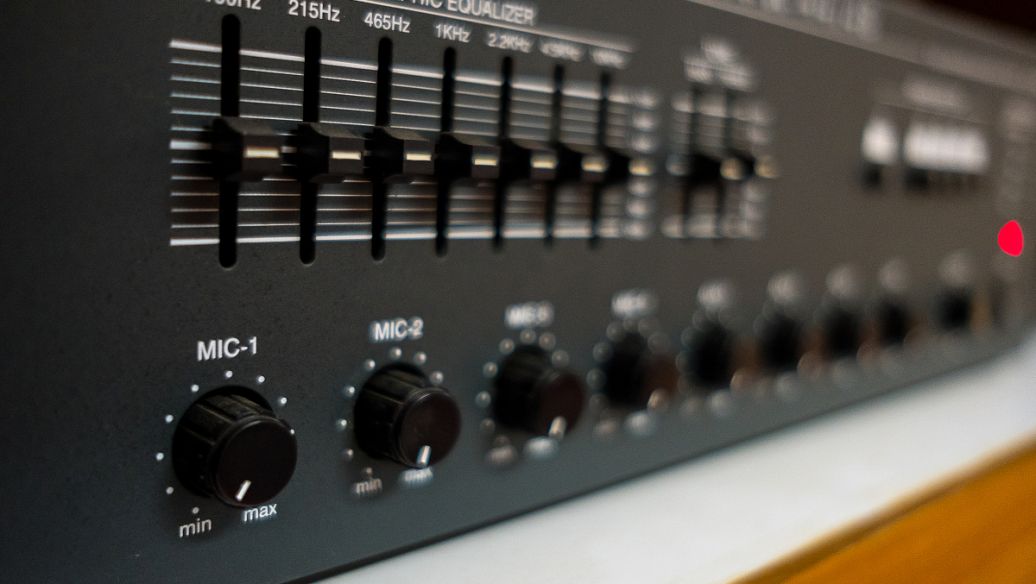柴可夫斯基蘆笛舞曲簡介
《蘆笛舞曲》,是2022年北京張家口冬奧會開幕式的第三首樂曲。
1.《蘆笛舞曲》(Les Mirlitons (Dance of the Reed Pipes))
柴可夫斯基(1840(道光二十一年)-1893(光緒十九年))《蘆笛舞曲》,在芭蕾舞劇《胡桃夾子》中,位於第二幕的插曲部分(The Nutcracker (ballet), Op.71 - Act II, No.12. Divertissement:Dance of the Sugar Plum Fairy(糖果仙子舞曲)),是糖果仙子舉辦盛宴時表演的五支特色舞蹈之一,這五首舞曲順序如下(以全劇約100min(1h40m00s)為例):
A.西班牙舞(005700)
B.阿拉伯舞曲(010220)
C.中國舞曲(010640)
D.俄羅斯舞曲(010810)
E.蘆笛舞曲(010940-011220)
五個段落的舞蹈,揔計時長約15’20”,以頭飾、髮型、服飾等為依託,每個段落的辨識度很高。
比如阿拉伯舞曲的頭飾,馮夢龍(1574-1646)《古今譚概》記載‘夷人黨護族類固其習性同然而回回尤甚京師隆福寺成民人縱觀寺僧云集一回回忽持斧上殿殺僧二人傷者二三人即時執送法司鞫問云見寺中新作輪藏其下推輪者皆刻我教門形像憫其經年推運辛苦是以讎而殺之孔子惡作俑這回子惱得不錯’。
再比如《中國舞曲》的髮型(pigtail),其獨辮長約1尺,垂至後胸處。事實上,這種髮型並不獨獨清朝所有,賈寶玉長髮,也不是因為其生於深宮之中長於婦人之手的女性化,男女皆長髮,至少是數千年的傳統,所謂‘身體發膚受之父母不敢毀傷’是也(孝經開宗明義章‘仲尼居曾子侍子曰先王有至德要道以順天下民用和睦上下無怨汝知之乎曾子避席曰參不敏何足以知之子曰夫孝德之本也教之所由生也復坐吾語汝身體髮膚受之父母不敢毀傷孝之始也立身行道揚名於後世以顯父母孝之終也夫孝始於事親中於事君終於立身大雅云無念爾祖聿脩厥德’)。
該曲目通常作為第二幕的過渡段落,之後以《花之圓舞曲》作為壓軸曲目結束全劇。其音樂風格輕盈靈動,具有鮮明的童話色彩和兒童音樂特色。
2.芭蕾舞劇《胡桃夾子》全劇詳細目錄(Detailed catalogue of the ballet The Nutcracker)
《胡桃夾子》作為經典童話與芭蕾舞劇的雙重載體,其目錄結構存在文學原著與舞臺版本差異,具體分版本整理如下。
基於柴可夫斯基改編的芭蕾舞劇,通常分為兩幕:
第一幕:聖誕夜宴會→胡桃夾子變身王子→與鼠王戰鬥→雪國仙境
第二幕:糖果王國盛宴→特色舞蹈表演(含《蘆笛舞曲》《花之圓舞曲》等)→慶典收尾
"The Nutcracker" is a captivating ballet composition, Op. 71, by the renowned Russian composer Pyotr Ilyich Tchaikovsky. Premiered in 1892, it has since become a beloved holiday classic performed worldwide. This enchanting piece tells the story of a young girl named Clara, who receives a magical nutcracker doll as a gift on Christmas Eve. The music unfolds a mesmerizing journey into a world of fantasy and wonder as Clara's nutcracker comes to life and leads her through an array of magical adventures, including a battle with the Mouse King and a visit to the Land of Sweets. Tchaikovsky's masterful composition features a delightful combination of lush orchestration, memorable melodies, and elegant dance rhythms. It captures the spirit of the holiday season with its joyful and melodic themes, evoking a sense of childlike awe and enchantment. From the vibrant and triumphant overture to the enchanting dances of the Sugar Plum Fairy and the Waltz of the Flowers, "The Nutcracker" embodies Tchaikovsky's ability to create music that transports listeners to a magical realm, making it an enduring masterpiece that continues to captivate audiences of all ages.
About this Piece
Difficulty Level:medium
Average Duration: 100min
Composer:Pyotr Ilyich Tchaikovsky
Form:Ballet
Key:B Minor
Instrument:Voice(s) and Orchestra
Period:Romantic
Sheet Music
The Nutcracker (ballet), Op.71 - Act I, No.1. The Christmas Tree
The Nutcracker (ballet), Op.71 - Act I, No.2. March
The Nutcracker (ballet), Op.71 - Act I, No.3. Childrens Galop and Entrance of the Parents
The Nutcracker (ballet), Op.71 - Act I, No.4. Dance Scene
The Nutcracker (ballet), Op.71 - Act I, No.5. Scene and Dance (Grandfather)
The Nutcracker (ballet), Op.71 - Act I, No.6. Scene
The Nutcracker (ballet), Op.71 - Act I, No.7. Scene
The Nutcracker (ballet), Op.71 - Act I, No.8. Scene
The Nutcracker (ballet), Op.71 - Act I, No.9. Waltz of the Snowflakes
The Nutcracker (ballet), Op.71 - Act II, No.10. Scene:The Kingdom of Sweets
The Nutcracker (ballet), Op.71 - Act II, No.11. Scene:Arrival of the Sugar Plum Fairy(糖果仙子登场场景)
The Nutcracker (ballet), Op.71 - Act II, No.12. Divertissement:Dance of the Sugar Plum Fairy(糖果仙子舞曲):
(a) Le Chocolate(Chocolate)(西班牙舞):以熱情弗拉門戈風格表現巧克力的主題;
(b) Le Café (Coffee)(阿拉伯舞):柔和的東方舞姿象徵咖啡的醇香;
(c) Le Thé(Tea)(中國舞):輕快的跳躍動作配合短笛旋律;
(d) Trépak(Trepak)(俄羅斯舞):高難度旋轉與踢踏展現民族特色;
(e) Les Mirlitons (Dance of the Reed Pipes)(蘆笛舞):牧歌風格的木管旋律配合佇列變換。
The Nutcracker (ballet), Op.71 - Act II, No.13. Waltz of the Flowers
The Nutcracker (ballet), Op.71 - Act II, No.14. Pas de Deux, Variations, and Coda
The Nutcracker (ballet), Op.71 - Act II, No.15. Waltz Finale and Apotheosis
3.霍夫曼原著童話版本目錄
不同編譯版本存在章節名稱差異,主要結構包含以下內容:
聖誕前夜(或“耶誕節晚上”)
聖誕禮物(或“給孩子們的禮物”)
胡桃夾子(或“被保護人”)
夜裏的怪現象(或“奇事”“午夜驚魂”)
大會戰(或“生死大戰”“戰役”)
受傷的瑪麗(或“躺在病床上的瑪麗”)
硬胡桃的故事(部分版本拆分為上、中、下三章)
叔侄二人(或“叔叔和侄子”)
最後勝利(或“大勝利”)
玩偶王國(或“小娃娃王國”)
王國京城(或“小娃娃王國的京城”)
結局(或“聖誕當日”)。
《蘆笛舞曲》,是2022年北京張家口冬奧會開幕式的第三首樂曲。
1.《蘆笛舞曲》(Les Mirlitons (Dance of the Reed Pipes))
柴可夫斯基(1840(道光二十一年)-1893(光緒十九年))《蘆笛舞曲》,在芭蕾舞劇《胡桃夾子》中,位於第二幕的插曲部分(The Nutcracker (ballet), Op.71 - Act II, No.12. Divertissement:Dance of the Sugar Plum Fairy(糖果仙子舞曲)),是糖果仙子舉辦盛宴時表演的五支特色舞蹈之一,這五首舞曲順序如下(以全劇約100min(1h40m00s)為例):
A.西班牙舞(005700)
B.阿拉伯舞曲(010220)
C.中國舞曲(010640)
D.俄羅斯舞曲(010810)
E.蘆笛舞曲(010940-011220)
五個段落的舞蹈,揔計時長約15’20”,以頭飾、髮型、服飾等為依託,每個段落的辨識度很高。
比如阿拉伯舞曲的頭飾,馮夢龍(1574-1646)《古今譚概》記載‘夷人黨護族類固其習性同然而回回尤甚京師隆福寺成民人縱觀寺僧云集一回回忽持斧上殿殺僧二人傷者二三人即時執送法司鞫問云見寺中新作輪藏其下推輪者皆刻我教門形像憫其經年推運辛苦是以讎而殺之孔子惡作俑這回子惱得不錯’。
再比如《中國舞曲》的髮型(pigtail),其獨辮長約1尺,垂至後胸處。事實上,這種髮型並不獨獨清朝所有,賈寶玉長髮,也不是因為其生於深宮之中長於婦人之手的女性化,男女皆長髮,至少是數千年的傳統,所謂‘身體發膚受之父母不敢毀傷’是也(孝經開宗明義章‘仲尼居曾子侍子曰先王有至德要道以順天下民用和睦上下無怨汝知之乎曾子避席曰參不敏何足以知之子曰夫孝德之本也教之所由生也復坐吾語汝身體髮膚受之父母不敢毀傷孝之始也立身行道揚名於後世以顯父母孝之終也夫孝始於事親中於事君終於立身大雅云無念爾祖聿脩厥德’)。
該曲目通常作為第二幕的過渡段落,之後以《花之圓舞曲》作為壓軸曲目結束全劇。其音樂風格輕盈靈動,具有鮮明的童話色彩和兒童音樂特色。
2.芭蕾舞劇《胡桃夾子》全劇詳細目錄(Detailed catalogue of the ballet The Nutcracker)
《胡桃夾子》作為經典童話與芭蕾舞劇的雙重載體,其目錄結構存在文學原著與舞臺版本差異,具體分版本整理如下。
基於柴可夫斯基改編的芭蕾舞劇,通常分為兩幕:
第一幕:聖誕夜宴會→胡桃夾子變身王子→與鼠王戰鬥→雪國仙境
第二幕:糖果王國盛宴→特色舞蹈表演(含《蘆笛舞曲》《花之圓舞曲》等)→慶典收尾
"The Nutcracker" is a captivating ballet composition, Op. 71, by the renowned Russian composer Pyotr Ilyich Tchaikovsky. Premiered in 1892, it has since become a beloved holiday classic performed worldwide. This enchanting piece tells the story of a young girl named Clara, who receives a magical nutcracker doll as a gift on Christmas Eve. The music unfolds a mesmerizing journey into a world of fantasy and wonder as Clara's nutcracker comes to life and leads her through an array of magical adventures, including a battle with the Mouse King and a visit to the Land of Sweets. Tchaikovsky's masterful composition features a delightful combination of lush orchestration, memorable melodies, and elegant dance rhythms. It captures the spirit of the holiday season with its joyful and melodic themes, evoking a sense of childlike awe and enchantment. From the vibrant and triumphant overture to the enchanting dances of the Sugar Plum Fairy and the Waltz of the Flowers, "The Nutcracker" embodies Tchaikovsky's ability to create music that transports listeners to a magical realm, making it an enduring masterpiece that continues to captivate audiences of all ages.
About this Piece
Difficulty Level:medium
Average Duration: 100min
Composer:Pyotr Ilyich Tchaikovsky
Form:Ballet
Key:B Minor
Instrument:Voice(s) and Orchestra
Period:Romantic
Sheet Music
The Nutcracker (ballet), Op.71 - Act I, No.1. The Christmas Tree
The Nutcracker (ballet), Op.71 - Act I, No.2. March
The Nutcracker (ballet), Op.71 - Act I, No.3. Childrens Galop and Entrance of the Parents
The Nutcracker (ballet), Op.71 - Act I, No.4. Dance Scene
The Nutcracker (ballet), Op.71 - Act I, No.5. Scene and Dance (Grandfather)
The Nutcracker (ballet), Op.71 - Act I, No.6. Scene
The Nutcracker (ballet), Op.71 - Act I, No.7. Scene
The Nutcracker (ballet), Op.71 - Act I, No.8. Scene
The Nutcracker (ballet), Op.71 - Act I, No.9. Waltz of the Snowflakes
The Nutcracker (ballet), Op.71 - Act II, No.10. Scene:The Kingdom of Sweets
The Nutcracker (ballet), Op.71 - Act II, No.11. Scene:Arrival of the Sugar Plum Fairy(糖果仙子登场场景)
The Nutcracker (ballet), Op.71 - Act II, No.12. Divertissement:Dance of the Sugar Plum Fairy(糖果仙子舞曲):
(a) Le Chocolate(Chocolate)(西班牙舞):以熱情弗拉門戈風格表現巧克力的主題;
(b) Le Café (Coffee)(阿拉伯舞):柔和的東方舞姿象徵咖啡的醇香;
(c) Le Thé(Tea)(中國舞):輕快的跳躍動作配合短笛旋律;
(d) Trépak(Trepak)(俄羅斯舞):高難度旋轉與踢踏展現民族特色;
(e) Les Mirlitons (Dance of the Reed Pipes)(蘆笛舞):牧歌風格的木管旋律配合佇列變換。
The Nutcracker (ballet), Op.71 - Act II, No.13. Waltz of the Flowers
The Nutcracker (ballet), Op.71 - Act II, No.14. Pas de Deux, Variations, and Coda
The Nutcracker (ballet), Op.71 - Act II, No.15. Waltz Finale and Apotheosis
3.霍夫曼原著童話版本目錄
不同編譯版本存在章節名稱差異,主要結構包含以下內容:
聖誕前夜(或“耶誕節晚上”)
聖誕禮物(或“給孩子們的禮物”)
胡桃夾子(或“被保護人”)
夜裏的怪現象(或“奇事”“午夜驚魂”)
大會戰(或“生死大戰”“戰役”)
受傷的瑪麗(或“躺在病床上的瑪麗”)
硬胡桃的故事(部分版本拆分為上、中、下三章)
叔侄二人(或“叔叔和侄子”)
最後勝利(或“大勝利”)
玩偶王國(或“小娃娃王國”)
王國京城(或“小娃娃王國的京城”)
結局(或“聖誕當日”)。



